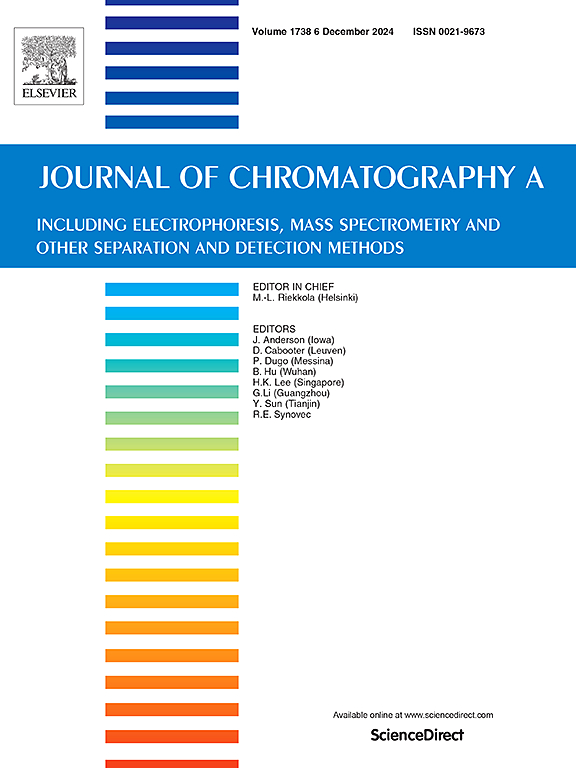Construction of carboxyl-functionalized hyper-cross-linked porous polymers using waste polystyrene for effective adsorption of phenolic contaminants
IF 3.8
2区 化学
Q1 BIOCHEMICAL RESEARCH METHODS
引用次数: 0
Abstract
The extensive presence of phenolic organic contaminants (POCs) poses a serious threat to humans. Meanwhile, the upcycling/reusing of waste polystyrene to reduce the exponential growth of plastic pollution is a very important environmental issue. Addressing these demands, a series of carboxyl-functional hypercrosslinked polymers (labeled PP-HCPs) were constructed by knitting waste polystyrene with pyromellitic dianhydride at different ratios through a one-step Friedel-Crafts reaction for effective adsorption of POCs. Among the prepared PP-HCPs, PP-HCP2 displayed a large specific surface area with high adsorption capacity (37.3 mg g−1) for POCs. Using PP-HCP2 as solid phase extraction sorbent, six POCs were effectively extracted from water and peach drink samples, then subjected to high-performance liquid chromatography-ultraviolet detection. The method demonstrated good linearity in the range of 0.03–100.0 ng mL−1 for water samples and 0.06–100.0 ng mL−1 for peach drinks under optimum experimental conditions. At a signal-to-noise ratio of 3, low detection limits were found to be 0.01–0.10 ng mL−1 for water samples and 0.02–0.15 ng mL−1 for peach drinks. Good accuracy and repeatability were achieved with recoveries of 85.3–111.8 % and the relative standard deviations below 8.6 %. The PP-HCP2-based approach can be employed as a dependable and sensitive tool to detect POCs in water and peach drink samples. This work delivers a simple and economically viable approach to fabricate carboxyl-functional HCPs by converting waste foam into high-value-added sorbent, with great significance for sustainable development.
求助全文
约1分钟内获得全文
求助全文
来源期刊

Journal of Chromatography A
化学-分析化学
CiteScore
7.90
自引率
14.60%
发文量
742
审稿时长
45 days
期刊介绍:
The Journal of Chromatography A provides a forum for the publication of original research and critical reviews on all aspects of fundamental and applied separation science. The scope of the journal includes chromatography and related techniques, electromigration techniques (e.g. electrophoresis, electrochromatography), hyphenated and other multi-dimensional techniques, sample preparation, and detection methods such as mass spectrometry. Contributions consist mainly of research papers dealing with the theory of separation methods, instrumental developments and analytical and preparative applications of general interest.
 求助内容:
求助内容: 应助结果提醒方式:
应助结果提醒方式:


